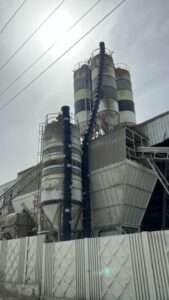Trash Chute, Construction Chute, Roofing Chute & Demo Chute Wholesaler
Trash Chute, Construction Chute, Roofing Chute & Demo Chute Wholesaler
In the demanding realm of construction projects, effective waste management is a top priority. This is where construction debris chute systems step into the limelight. Construction debris chute systems offer an efficient, safe, and clean method for eliminating waste from construction sites. In this detailed construction debris chute systems guide, we delve into the intricacies of construction debris chute systems, dissecting their construction, the advantages they confer, and the best practices for optimizing their use.
Essential Components of Construction Debris Chute Systems
Debris chute systems are masterfully designed for the safe and efficient disposal of waste from construction sites. Typically, these systems consist of a series of cylindrical sections, stacked vertically, enabling a smooth flow of debris from higher levels to the ground or a designated disposal area. Understanding their structure and functionality can help harness their potential more effectively.
Every construction debris chute system is made up of several vital components. Let’s break down these parts and their roles in the system:
- Chute Sections: These cylindrical units form the body of the chute system. They are usually made from high-density polyethylene (HDPE) or steel, materials known for their durability and robustness. These materials ensure that the chute sections can withstand the rigors of handling construction waste.
- Hopper Doors: These doors are strategically positioned at different levels of a building, allowing debris to be inserted into the chute from various floors. This flexibility makes debris disposal more convenient and accelerates the waste management process.
- Anchoring System: This is the mechanism that holds the chute system securely in place. The chute is typically anchored to the side of a building or a scaffold, ensuring stability during operation.
- Discharge End: This component is located at the bottom of the chute system and directs debris into a dumpster or a designated disposal area. The discharge end is crucial for maintaining orderliness and efficiency at the disposal site.
- Debris Netting: This safety feature is installed around the chute to prevent the escape of stray debris during transit. The netting keeps the surrounding area clean and reduces the risk of accidents from falling debris.
Understanding these components will give you a clearer picture of how a construction debris chute system works, and how it contributes to effective waste management on construction sites.
Advantages of Utilizing Construction Debris Chute Systems
The use of a construction debris chute systems guide confers a wide range of benefits to construction projects of any scale. Let’s explore some of these advantages:
- Safety: Safety is paramount in any construction project. Construction debris chute systems significantly reduce the risk of accidents caused by falling debris. By safely channeling waste materials from various floors to the ground, these systems help maintain a safer workspace.
- Efficiency: Time is a crucial resource in construction projects. Construction debris chute systems speed up the process of waste disposal, drastically cutting down the time required to transport debris from higher levels to the ground. This leads to increased work efficiency and faster project completion times.
- Cleanliness: Maintaining a clean construction site can be a daunting task, especially for large-scale projects. However, construction debris chute systems simplify this task by minimizing the scattering of debris, helping maintain cleanliness at construction sites. This makes for a more organized work environment, which in turn can enhance productivity.
- Ease of Use: Construction debris chute systems are designed to be user-friendly. With strategically located hopper doors, workers can easily insert waste materials into the chute from different floors. This convenience further bolsters the efficiency of the waste management process.
- Cost-Effective: By speeding up waste disposal and reducing the need for manual waste handling, debris chute systems can contribute to significant cost savings in the long run. These systems are a worthy investment for any construction project, delivering value in terms of both time and money.
Best Practices for Maximizing Construction Debris Chute Systems
Construction debris chute systems are a powerful tool when used correctly. To maximize the potential of your debris chute system, here are some best practices to follow:
- Correct Installation: A properly installed chute system is key to its effectiveness. The system should be correctly assembled and securely attached to the building or scaffold. The anchoring system must be sturdy and stable to maintain the chute’s balance and prevent any mishaps.
- Regular Maintenance: Like any equipment, debris chute systems require regular maintenance to function optimally. Regularly inspect the chute system for any signs of wear and tear. Any damaged sections should be immediately replaced to prevent potential accidents and maintain the system’s efficiency.
- Proper Use: Debris chute systems are designed for disposing of construction waste materials. They should never be used for disposing of hazardous materials, which require special handling and disposal methods. Educate all workers on the proper use of the chute system to prevent misuse.
- Safety Equipment: Safety should always be the top priority in any construction site. Workers should always wear appropriate safety gear, such as helmets, gloves, and safety goggles, when operating or working near the debris chute system. This can significantly reduce the risk of accidents and injuries.
By adhering to these best practices, you can ensure that your debris chute system operates at its best, providing maximum benefits for your construction project.
Visualizing Trash Chute Systems with a Diagram
To better understand how a debris chute system works, let’s visualize its structure with a diagram. This diagram will delineate the key components and their connections within a typical debris chute system.
In this debris chute systems guide diagram:
- Top Hopper: This is the entry point for debris at the highest level of the construction site. It is designed to handle a large volume of waste materials and guides them into the chute.
- Intermediate Hoppers: These are the additional entry points positioned at different levels of the building, allowing debris to be inserted into the chute from various floors. They play a vital role in making the chute system accessible from multiple points within the construction site.
- Chute Sections: These are the cylindrical units, connected vertically, that guide the waste downward. They form the main pathway for the waste materials, directing them towards the disposal area.
- Anchor Frame: This component ensures stability by securing the chute system to the building or scaffold. It bears the weight of the chute and the debris, holding the entire system firmly in place.
- Outrigger Frame: This feature extends from the building, providing additional support and stability for the debris chute system. It helps to distribute the load and counterbalance the weight of the debris.
- Discharge End: This is the lower end of the chute where debris exits the system. It guides the waste materials into the designated disposal area, ensuring a smooth and orderly disposal process.
- Debris Container: This is where the debris lands after passing through the chute. It collects the waste materials, ready for removal from the site. Depending on the waste disposal method, the container can be a dumpster, a truck, or any other suitable waste collection system.
How HodChutes Can Help
By visualizing construction debris chute systems, you can gain a more tangible grasp of its structure and operation. This understanding can be invaluable when planning waste management strategies for your construction project.
Construction debris chute systems are an essential tool for efficient and safe waste management in construction sites. They streamline the waste disposal process, enhancing safety and cleanliness while saving time and costs. By understanding their structure, benefits, and best practices, you can make the most of these systems, ultimately boosting the success of your construction projects. Remember, the goal is to work smarter, not harder, and debris chute systems are a smart solution for construction waste management.
ISO CERTIFIED

SECURED PAYMENT


